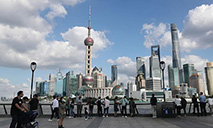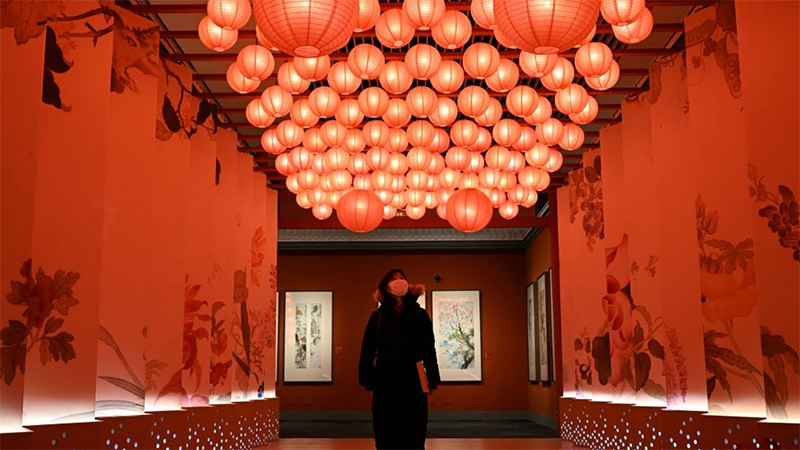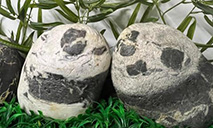Strong cultural bonds form foundation of China-Pakistan friendship
Only a few days remain before celebrating Chinese Lunar New Year, also known as the Spring Festival, and yet, a festival atmosphere can also be seen in Pakistan too these days. There are so many Chinese restaurants, shops, supermarkets, etc., all decorated in a traditional Chinese style, offering special offers, big discounts, and attracting both Chinese and Pakistani customers alike.
There exists a huge community of Chinese, many of whom are engaged in projects related to the China-Pakistan Economic Corridor (CPEC), who are also preparing for the festival. Usually, Chinese companies will organize cultural performances and food to celebrate the festival in addition to inviting Pakistani colleagues and officials to join in the fun. Although due to the ongoing COVID-19 pandemic, large gatherings are to be avoided this year, though smaller-scale activities will still be able to play an enhanced role during the festive season, following the implementation of the proper Standard Operating Procedures (SoPs) for prevention.
China will be celebrating the “Chinese New Year,” a public holiday generally known in the country as “Spring Festival,” on Tuesday, Feb. 1, 2022. It is based on the lunar calendar and usually falls between Jan. 21 and Feb. 20 every year. It is one of the most important and biggest festivals in traditional Chinese culture, and one of the longest public holidays, lasting up to seven days.
The Chinese New Year is celebrated in China as well as in neighboring countries like Singapore, Malaysia, Thailand, the Philippines, South Korea, and all around the world where there are Chinese communities. In Pakistan, there are up to 90,000 Chinese who have lived there for various periods of time. They will also be celebrating the festival in its full cultural and traditional spirit.
Many similarities exist between the Chinese New Year and Pakistan’s traditional “Eid” festival. Both are based on the lunar calendar and are among the most important and biggest festivals in each society. Both are family-centric festivals, which serve as a time when everyone will spend time with their loved ones. Many will seek to travel home for reunions with elderly family members, even if this means travelling long distances. Every year, both countries witness large migrations during the festival season. People may face difficulties booking tickets for trains, flights, or long-distance buses, and have to battle through heavy traffic, but will still nonetheless make the journey back to their hometowns.
In China, the most exciting part of the festival is Chinese New Year’s Eve, when people stay up late at night and set off fireworks. In Pakistan, people try to finish their shopping for “Eid” and stay up late at night as well, busying themselves with eating and shopping and other fun things.
Another thing the two festivals have in common is the giving out of cash envelopes. In China, it is very common for older people to put money in red envelopes and then gift the packets to youngsters. In Pakistan, this practice is called “Eidi,” and kids will then spend this money however they want.
Family meals are another common feature, with the whole family enjoying a big sumptuous meal specially prepared for the festival and which usually contains a very rich and traditional variety of foods. Even poor families will also try to cook their best food on this occasion. The family dinner is a sign of unity and love between family members. It is also a symbol of respect for the elderly and affection for young people.
In both cultures, it is an opportunity to visit and spend time with relatives and friends. People are usually busy trying to make a living and don’t have the chance to spend time with other family members, but the festival gives them a chance to strengthen family bonds and friendships. This tradition is again common in both cultures.
Those who have passed away are also remembered during this period. In both cultures, ancestors receive a lot of respect, and they are not ignored on such an important occasion.
Chinese people finish cleaning and decorating their houses ahead of the festival. Before the Eid festival in Pakistan, people also thoroughly clean everything, buy new furniture and decorate their homes.
Wearing new clothes is another common features of both cultures. Women and children in particular will adorn themselves with new clothes and new jewelry to mark the festival.
There is also a common emerging trend among the youth in the two cultures, in which they use the long holidays to travel for picnics, honeymoons and pleasure trips. Based on our strong cultural bonds, the China-Pakistan friendship is continuing to grow in all dimensions, and strong collaboration and cooperation continue to persist. The history of interactions between China and Pakistan goes back to several thousands of years. Ancient Chinese traders used to travel to Central Asia, the Middle East, and Europe by bypassing Pakistan and have had a large amount of interactions with locals, imparting a deep cultural influence on local people in Pakistan. China’s famous monks, like Fa Xian and Xuan Zang, lived in Pakistan for long periods of time and developed in-depth interactions with locals. The cultural bonds existing between the two nations is strong enough to support our everlasting friendship. This relationship will expand into all domains of Pakistani life and grow further with the passing of each day.
Availing this opportunity, I wish all my Chinese brothers and sisters a Happy New Year, good health, a long life, happiness in life and prosperity.
Zamir Ahmed Awan is a non-resident fellow with the Center for China and Globalization (CCG) and a sinologist at the National University of Sciences and Technology in Pakistan. E-mail: awanzamir@yahoo.com.
This article does not necessarily reflect the views of People's Daily Online.
Photos
Related Stories
- Pakistani medical expert contributes to advancing China-Pakistan medical cooperation
- Pakistan assumes chairmanship of Group of 77 and China
- Pakistan to learn from China on industrialization: senate chairman
- Year 2021 demonstrates purity of friendship between China and Pakistan
- Pakistani entrepreneur expands popularity of “Made in China” products among increasingly more Pakistanis
Copyright © 2022 People's Daily Online. All Rights Reserved.










